Borderland artist Luis Lopez moved from Laredo, Texas to San Antonio nearly 50 years ago to pursue his passion for creating art. Over the past five decades, Lopez has received recognition on both sides of the U.S.--Mexico border for his diverse and transformative body of work, including paintings, murals, mosaics, and large-scale metal public sculptures.
Luis Lopez, “Forgotten Song.” Photo by Ricardo Romo.
Lopez divides his painting time between his studios in Texas and Tampico. A recent exhibit, “Mutations,” opened on April 26, 2025 at the Espacio Cultural Metropolitano in Tampico. Lopez’s new work presents a powerful visual narrative exploring borderland themes of migration, identity, and evolution through a series of expressive and thought-provoking paintings.
Since the mid 1970s, Lopez has been building an extensive artistic career in the United States and more recently in Mexico where he continues to explore transnational cultural exchanges and the complexities of the immigrant experience. The exhibition “Mutations” in Tampico, Mexico draws from López’s personal journey and creative evolution, offering viewers a deeply reflective and resonant experience.
Born in 1954 in Rio Bravo, Tamaulipas, Mexico, Lopez was raised in the rural Mexican borderlands in a family of subsistence farmers and goat herders. As a child, he lived in an ejido—a village formed under a Mexican land reform program initiated after the Revolution of 1910, designed to provide communal land for working-class families. Although he showed promise in school, Lopez’s formal education ended in the eighth grade due to family labor needs.
Lopez’s art journey in San Antonio began at the city’s historic Market Square in 1976, when he was mentored by Latino artist Armando Sanchez. Lopez learned about larger art construction by assisting renowned artist Jesus Garza in painting the first mural in the Mexican restaurant Mi Tierra. He worked long hours in the restaurant but also built connections with the Cortez family, owners of several iconic San Antonio restaurants.
Luis Lopez, “Orgullo tejano!” San Antonio River Walk. Photo courtesy of the artist.
In San Antonio, Lopez initially took on a range of working-class jobs—from sign painting to dishwashing and waiting tables. By the mid-1980s, Lopez was selling art in Armando Sanchez’s art shop and creating original paintings depicting San Antonio landmarks. Maya Angelou was among his early collectors. Her repeated patronage deeply encouraged Lopez, who remained touched when her estate reached out after her passing to verify the authenticity of his work.
Over a nearly 50 year career, Lopez’s artistic style has ranged from figurative and impressionistic to abstract and surrealism. His preferred mediums include oil and acrylic painting, sculpture, mosaics, and metalwork. His paintings often represent images of Mexican heritage, Tejano culture, environmental issues, and community as well as borderland themes.
Luis Lopez, “Tiempo de vacas gordas.” Photo courtesy of the artist.
In 1991, a major opportunity arrived when Continental Floral Greens, a company that produced decorative ferns, commissioned Lopez to paint large oil landscapes as holiday gifts for clients. The financial success of this venture allowed him to leave the restaurant jobs and build a home and studio in San Antonio.
Luis Lopez, “Orlgullo Tejano” [Texas Pride]. Photo by Ricardo Romo.
Among Lopez’s most recognized pieces is Orgullo Tejano (Tejano Pride), a 14-foot-tall mosaic and steel sculpture of a well-known Tejano accordion player, Esteban Jordan, near Old Highway 90 and SW 37th Street. The work honors the legacy of conjunto and Tejano music. After interviewing Lopez at his home, Harriett and I drove to the deep Westside of San Antonio to see the Tejano Pride sculpture. It is well placed on Highway 90, a mere half block from the famed Bravo Records store, a location that Flaco and Santiago Jimenez, Esteban Jordan, and other Tejano musicians frequented to buy records. A smaller version of Tejano pride is featured at the San Antonio River Walk Public Art Garden. The image was also depicted on the official City of San Antonio 2024 Fiesta Medal.
Lopez has painted murals for San Antonio College, the University of Texas at San Antonio, and prominent Mexican restaurants, including the beloved “Los Mariachis” mural at La Margarita Restaurant in the San Antonio Mercado.
Luis Lopez, “Esperando la alborada.” Courtesy of the artist.
In recent years, Lopez has focused on large-scale metal sculpture. His works include pieces for the Metro Hospital and the San Antonio College Planetarium. This shift marks a new phase in his career, where sculpture becomes a medium to reach broader audiences and tackle complex themes.
In 2006, Lopez founded La Casa Rosa Art Studio in Tobin Hill, which reopened in 2024 with the exhibit Mutations showcasing his most recent work. The studio functions as a workspace, gallery, and community hub supporting emerging local artists.
Lopez’s works are included in private collections, museums, and public spaces throughout San Antonio and beyond. He is widely recognized for his contributions to the city’s cultural landscape and his role in celebrating Latino, Mexican, and Tejano heritage through public art. Through it all, Lopez remains deeply connected to his roots, dividing his time between Casa Rosa in San Antonio and a mountaintop villa, Casa Verde, that he built in El Chorrito, Tamaulipas between the towns of Linares and Ciudad Victoria.
Luis Lopez in front of his Casa Rosa on Dewey Street, San Antonio, Texas. Photo by Ricardo Romo.
On a recent visit with Lopez at his Casa Rosa home near San Antonio College, Harriett and I learned about his preparation for an upcoming exhibit of “Mutations” at the Museo Leonora Carrington in Xilitla [San Luis Potosí City], the first museum dedicated to the renowned Mexican surrealist artist, Leonora Carrington. The museum is located inside the historic Centro de las Artes de San Luis Potosí. It is a former penitentiary transformed into a vibrant cultural center. Ideas for many of the “Mutations” paintings came to Lopez during COVID19 when he watched the media news about virus mutations and realized that people themselves experienced cultural “mutations” as did society as a whole during this frightening period.
Luis Lopez, “ Cosmic Alliance.” Photo courtesy of the artist.
Luis Lopez’s journey—from rural ejido life to becoming a leading public artist in one of America’s most vibrant Latino cities—stands as a testament to resilience, creativity, and artistic achievements. His art reflects his deep cultural roots, Tejano pride, and a lifelong journey of adaptation, creativity, and transformation. His mission remains clear: to stir the soul, inspire the community, and give voice to stories often left untold.
Luis Lopez, “Male Torso with Abstract.” Photo courtesy of the artist.
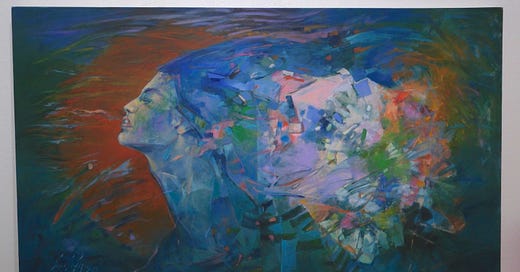



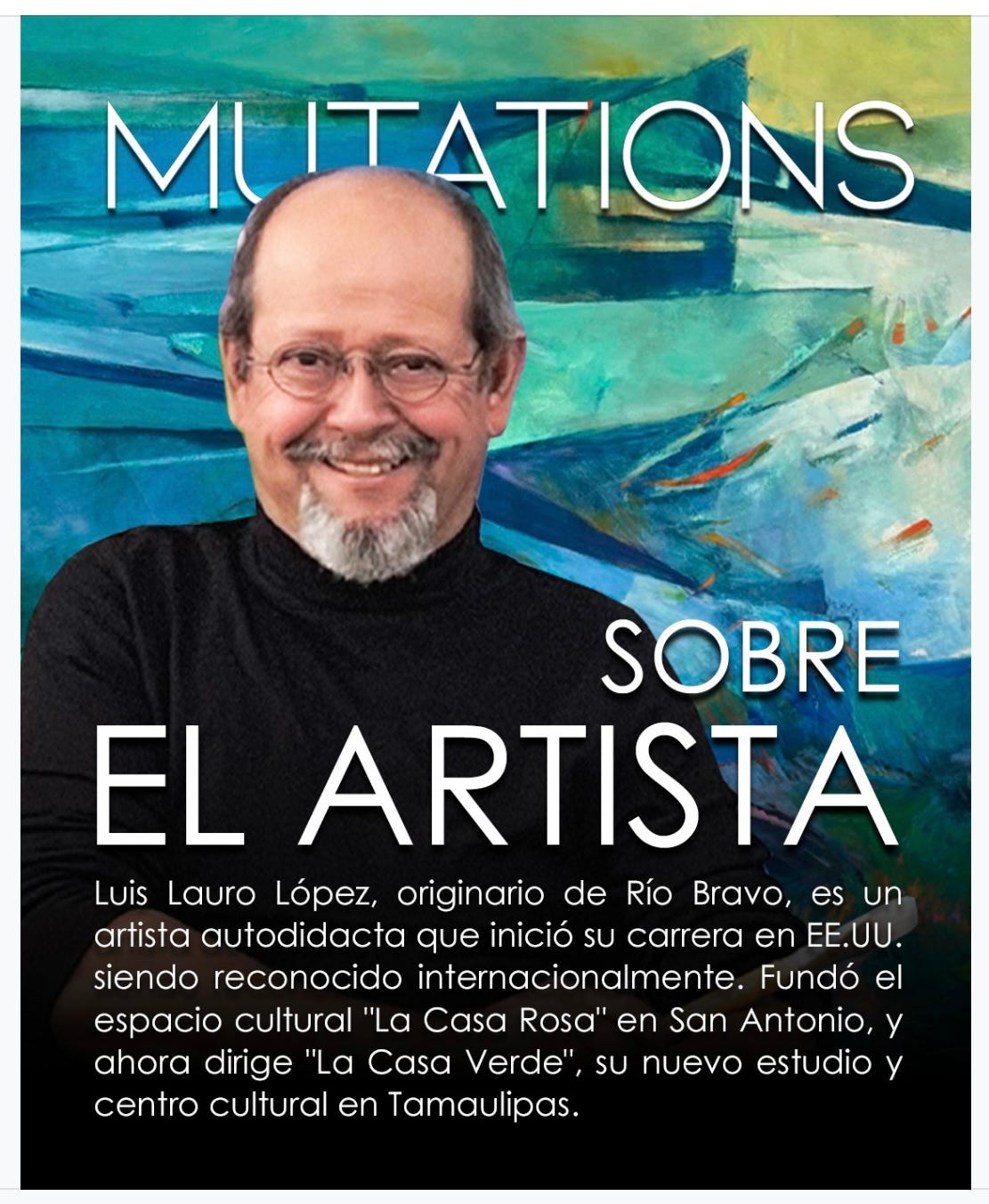
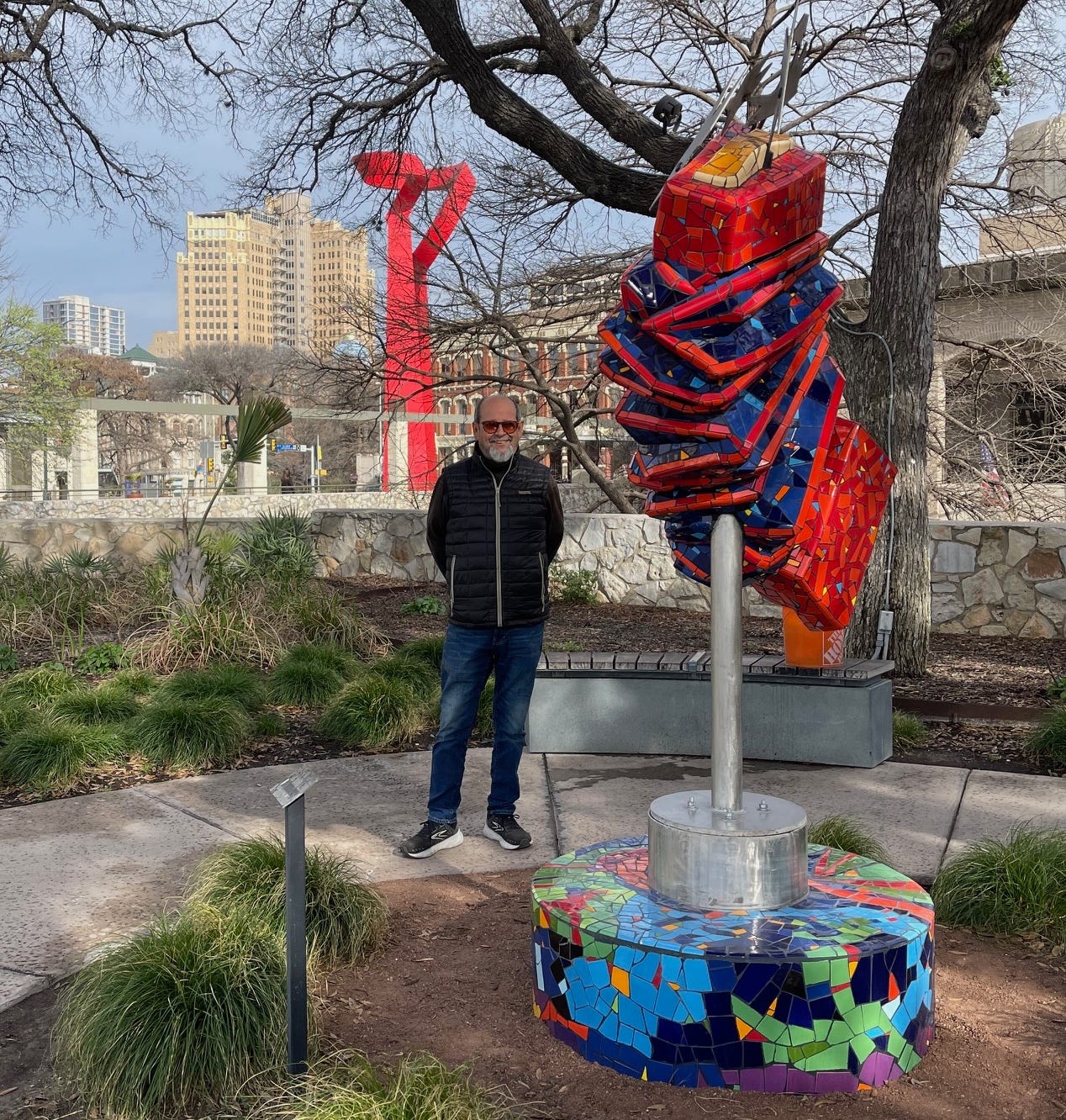
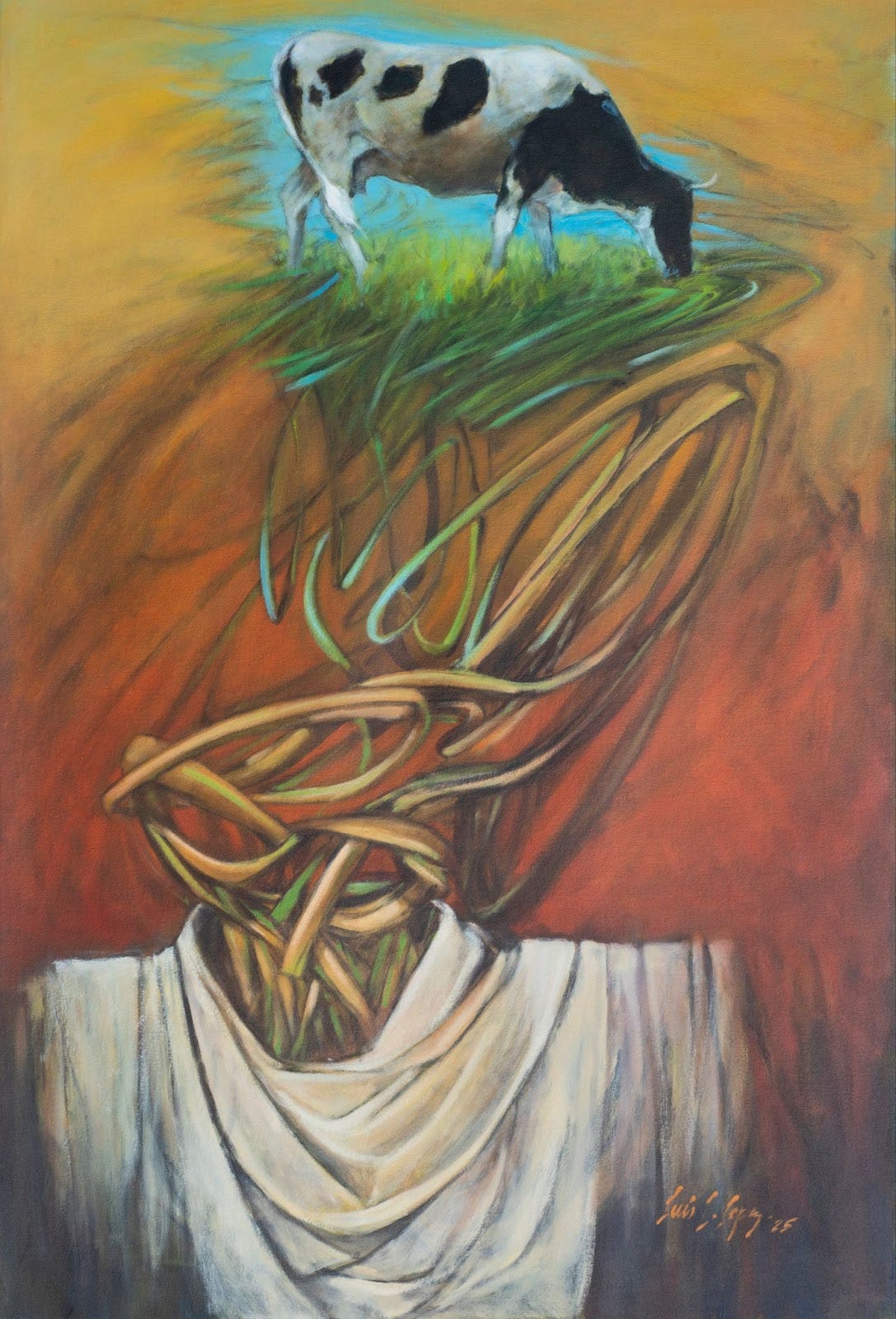
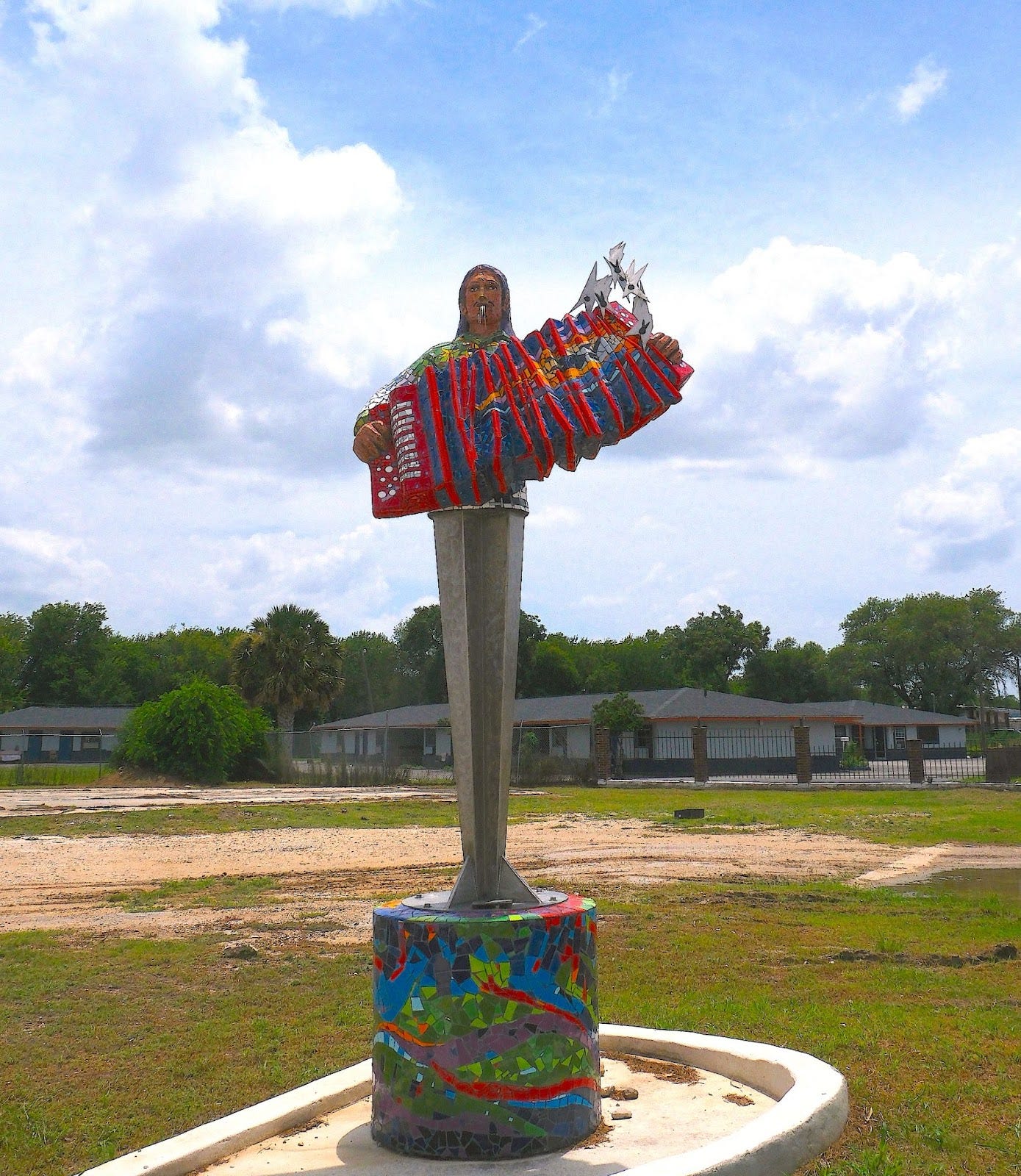
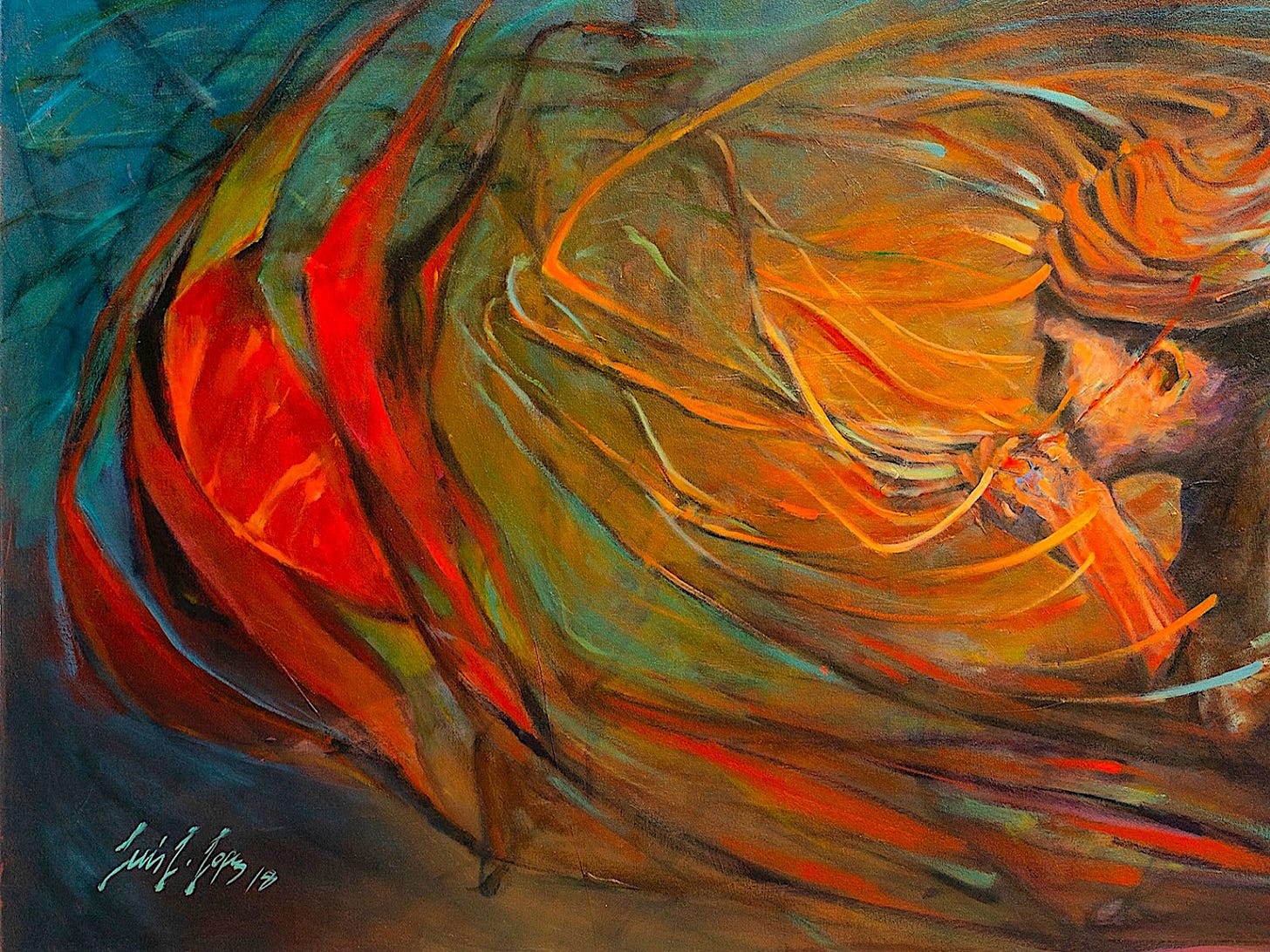

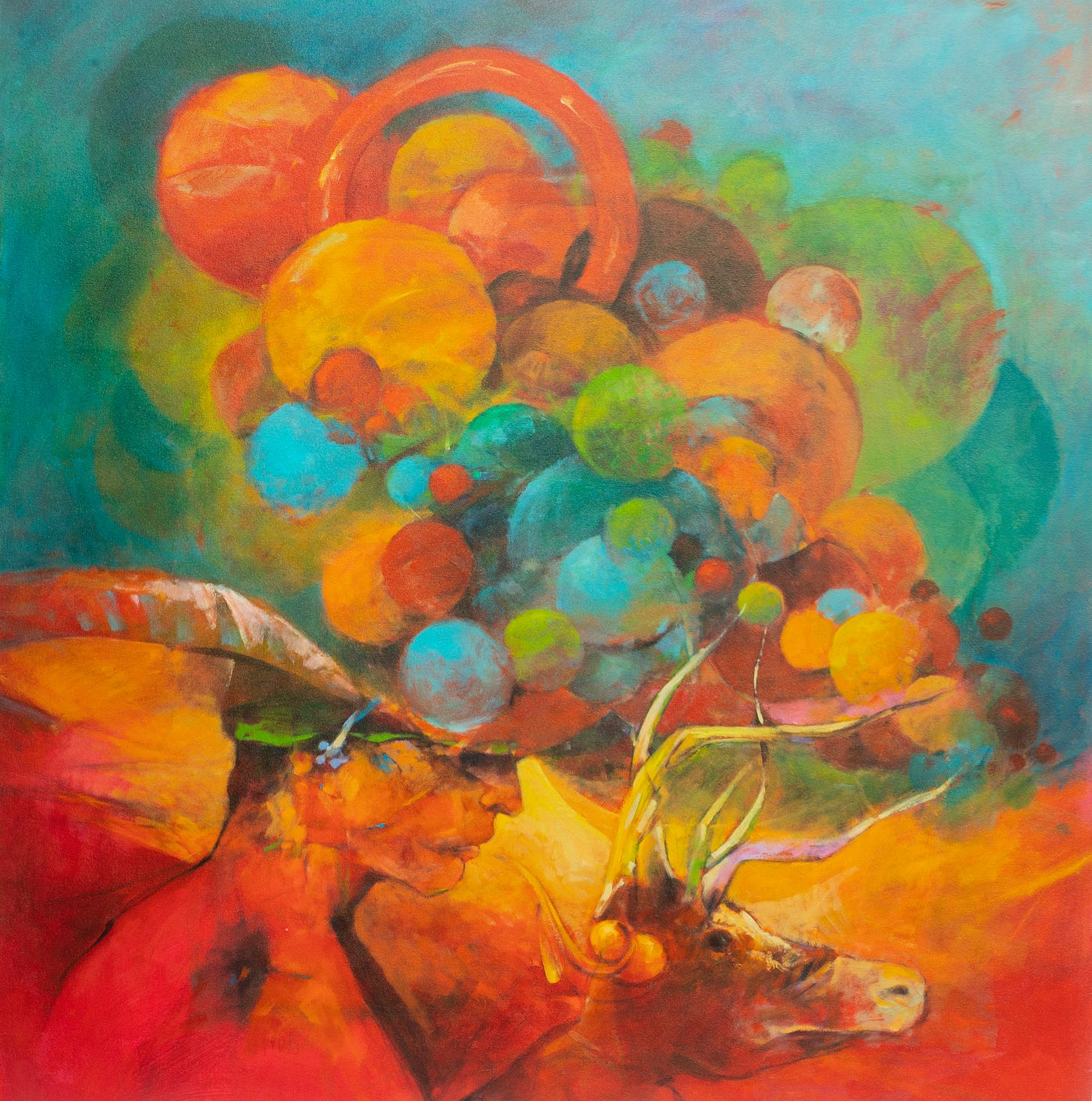
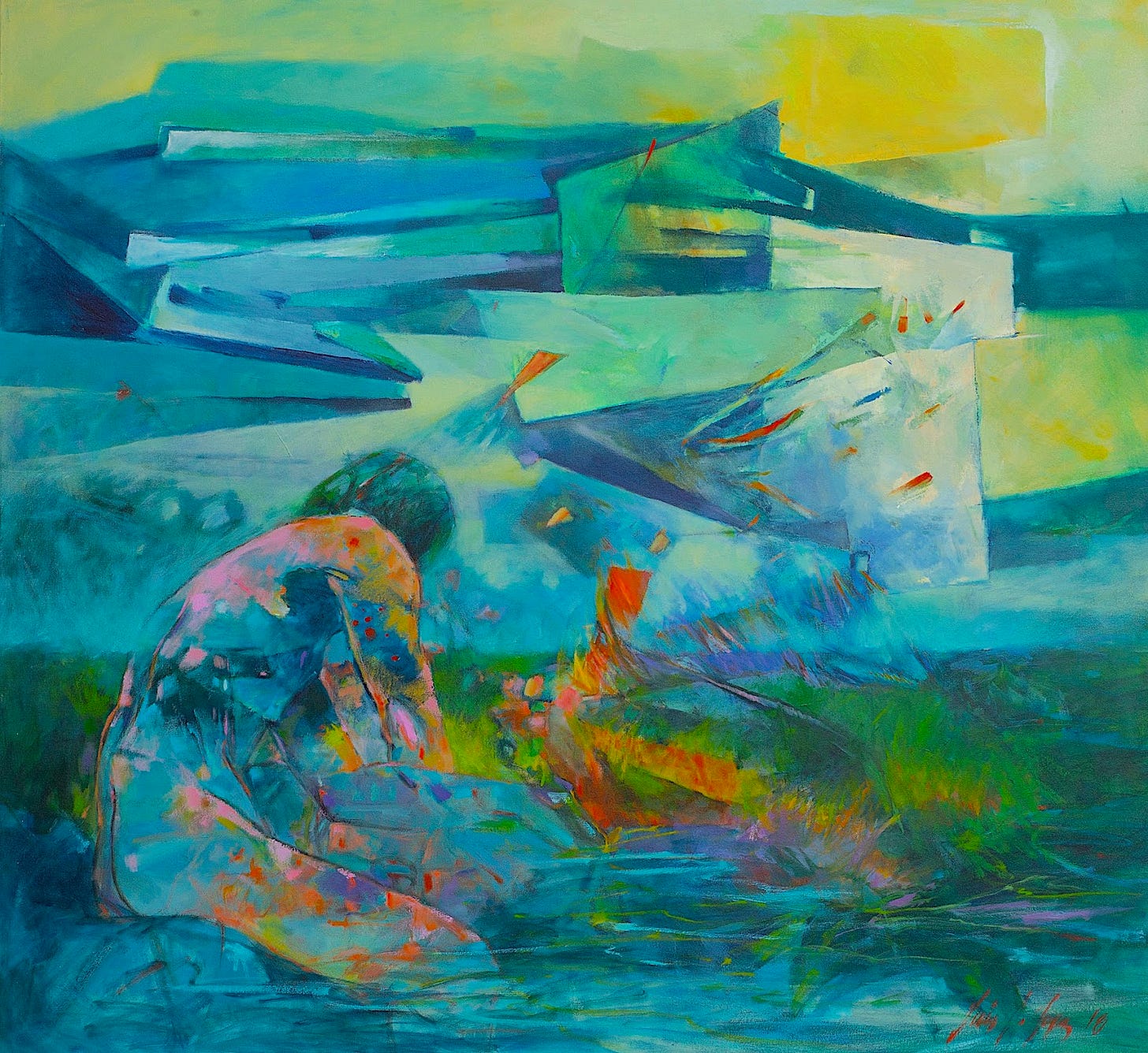
great artist, great history and great story. thanks
Artist Robert Tatum, told me Luis Lopez was his first studio mate when he came to San Antonio, which Tatum affectionately refers to as the Tatum Necio Years. Each has given me wonderful stories on artworks that will resonate with me for years that will make me treasure so many works. As a kid on the west side, I saw the murals record our community history and the first surrealist painter was Magritte but Lopez offers another level for me because of our shared culture. As a kid this would have been a wonderful living artist to have study. Thanks for the wonderful article to record Luis Lopez's contribution to art.